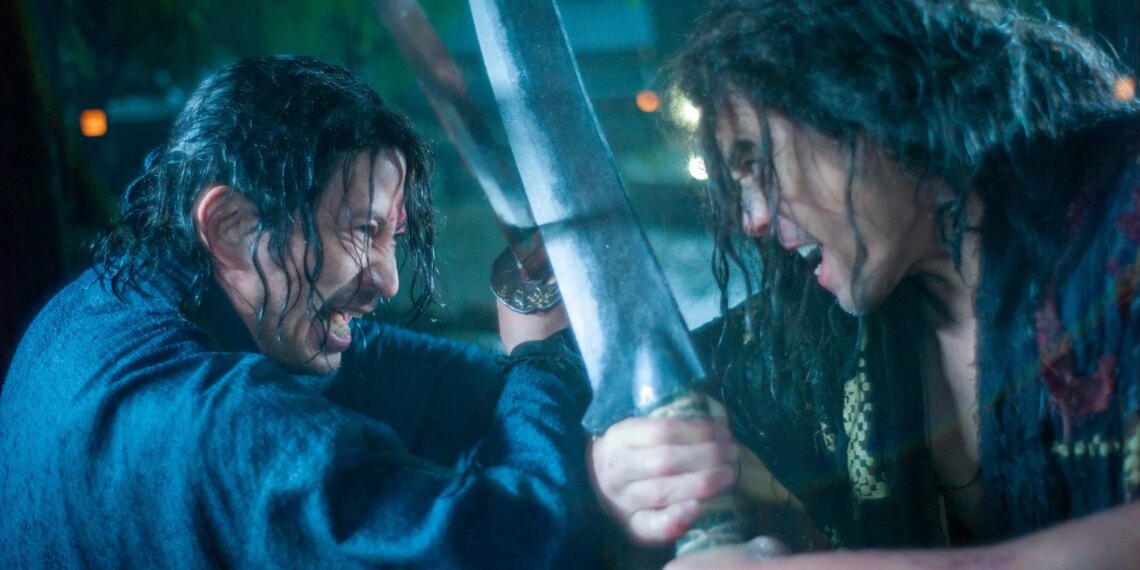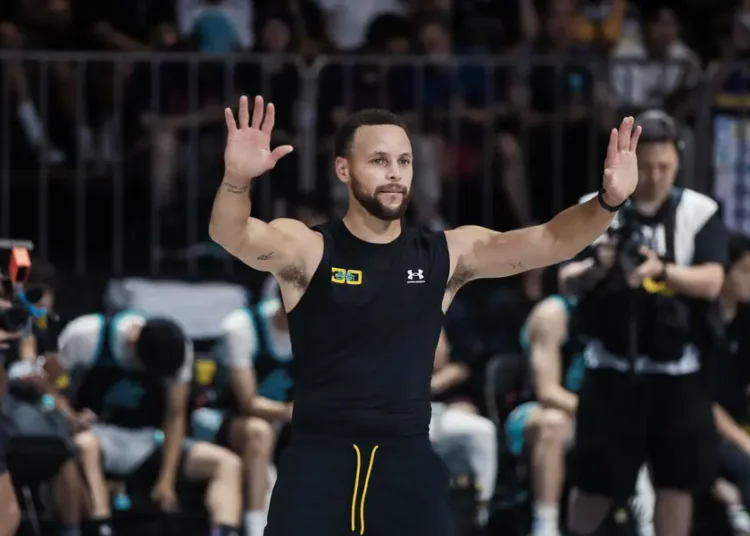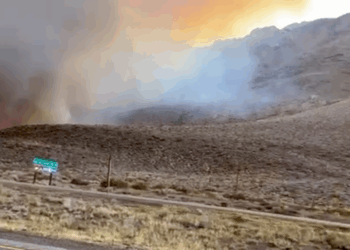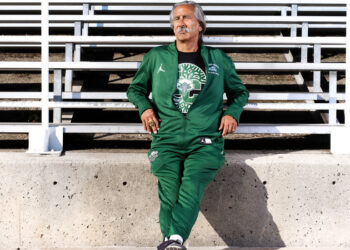Warning: Spoilers ahead for Last Samurai Standing
In the breathless opening one-er of Last Samurai Standing, samurai protagonist Shujiro Saga (Junichi Okada, also a producer and action choreographer) cuts through dozens of men as he charges across a muddy battlefield, up a hill, and past the enemy’s jinmaku to behead their leader. His victory is short-lived, however. The sword-driven action that should halt the bloodshed is quickly swallowed by canon fire.
[time-brightcove not-tgx=”true”]
“Stop!” Shujiro screams into the gunpowder sky, as men from both sides of the battle are indiscriminately slaughtered around him, as if one man can halt the brutal churn of history. Most of Netflix’s Japanese action period drama takes place a decade after the Battle of Toba–Fushimi, a deciding event in the Boshin War, but the effects of this opening battle—which took 300 actors and three weeks to film—will ripple through the entire series.
When does Last Samurai Standing take place?
“Okada-san [and I] really wanted to create action that nobody has seen before, and we wanted to update the Japanese period piece,” says screenwriter and director Michihito Fujii. “People often use battle royale to express this, but [Last Samurai Standing] is a character drama. The strength of the characters as well as the accuracy of the action, as well as the sense of beauty and the sense that we have as a tradition, is something that I wanted to express, and that was my challenge.”
In Last Samurai Standing, the opening battle signals the end of the Edo period, when the samurai warrior class held notable political and social power, and the start of the Meiji era in 1868, which restored imperial rule and would see Japan rapidly industrialize and accept more Western ideas and influences. As the film illustrates, this process doesn’t happen overnight; a decade later, when Shujiro is married with two children, the samurai class are a shadow of their former glory. Many samurai remain, but sword-carrying is outlawed, leaving many of them jobless and destitute.
The main action of Last Samurai Standing takes place in 1878 as cholera sweeps the nation. When Shujiro’s family gets sick, he doesn’t have money for medicine. His daughter dies. Devastated and desperate to save his wife and son, he enters a death game competition that promises to award one billion yen (roughly $650 million) to the winner.
Last Samurai Standing is based on a historical novel by Shogo Imamura with artwork from Katsumi Tatsuzawa. (The book has also been adapted into a manga of the same name.) Though the live-action adaptation is deeply inspired by the historical source material, Fujii found many relevant contemporary themes in the samurai story. “The people who used to be samurai no longer have the privilege and find it difficult to live,” Fujii tells TIME. “Those people who lost their profession, how would they survive? How would they live? Today, the changes that are happening in Japan, as well as outside of Japan, feel quite similar.”
What is the Kodoku?
The death game in Last Samurai Standing is called kodoku, named after a poison-making ritual in Japanese folklore that involved putting several bugs in a jar and letting them kill each other until only one survived. In this Kodoku, 292 fighters start in Kyoto. Each has a wooden tag around their neck. If you kill another competitor, you get their tag.
Competitors need a certain amount of tags to pass through each of the seven checkpoints on the road to Tokyo. If they fail to collect those tags or lose their own, they will be killed by armed men watching their every move. The contestants have a month to make it to Tokyo. While it is not clear what will happen in Tokyo, presumably the more tags a competitor has, the better. One of the Kodoku’s checkpoint guards lets slip that up to nine people could survive the game.
“[Shijuro] is not pro-battle, but he’s basically thrown into this death game,” says Okada, noting that his character also has PTSD from the battle he endured a decade prior. “How is he going to survive? I want you to watch how he goes through that experience until the very end, and I think you will see the true samurai in him.”
Who is the Organizer?
While the Kodoku is funded by four rich businessmen who bet on the death game for kicks, it was organized by Kawaji (Gaku Hamada), the Superintendent-General of Japan’s police service. Kawaji hates the samurai, believing that they stand in the way of Japan’s industrial progress, and organizes the game to finally eradicate the warrior class, knowing that they will participate. He betrays his government colleagues, including Home Minister Okubo (Arata Iura) to do so. It is eventually revealed that Kawaji was also the man who gave the order to fire canons at the Battle of Toba–Fushimi, killing samurai on both sides after the outcome had been decided.
Who wins the Kodoku competition?
We’re going to have to keep watching to find out. After six episodes, Last Samurai Standing ends very much in the middle of the story. Remaining contestants include: Shujiro; Futaba (Yumia Fujisaki), the teen girl Shujiro is intent on protecting; Iroha (Kaya Kiyohara), a female warrior who grew up training alongside Shujiro; Kyojin (Masahiro Higashide), a smiling strategist who temporarily allies with Shujiro; Sayama (Jyo Kairi), the young man who Futaba refused to leave behind; and Kocha Kamuy (Shota Sometani), the Ainu archer.
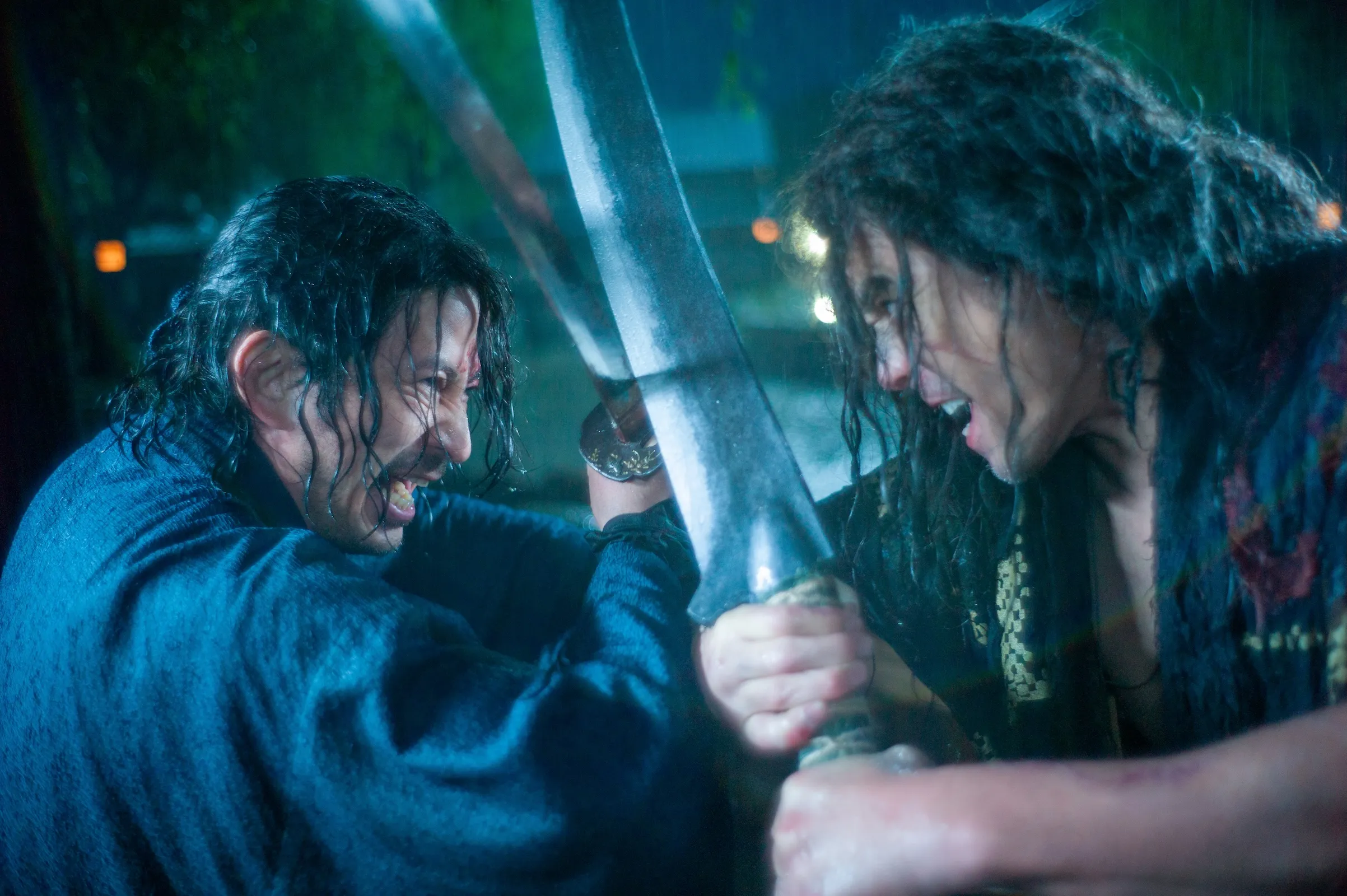
Shujiro kills Bukotsu
We do not get a definitive answer on who wins the Kodoku just yet, but we do see Shujiro take out one of the competition’s most ruthless contestants. While many of the characters we get to know in Last Samurai Standing enter the competition because they are desperate to help their loved ones, Bukotsu (Hideaki Ito) seems to just enjoy killing. He doesn’t stop at taking out his competitors; throughout Season 1, he is seen killing innocent bystanders for fun and as a way to provoke his competitors into a fight.
In the final episode, we learn that Bukotsu was also on the battlefield at the Battle of Toba–Fushimi. He and Shujiro fought then, with Shujiro winning. Buktosu made a promise: if Shujiro leaves him alive, he will hunt him down, but the weary warrior simply walks away. Years later, after living a decade in prison, Bukotsu is recruited for the Kodoku by Sakura (Yasushi Fuchigami), also a former samurai and Kawaji’s chief enforcer.
The fast-paced fight sequence that ends in Buktosu’s death is only one example of the intense, meticulously choreographed action scenes that define Last Samurai Standing. “It’s not in the original source material, but I basically came up with the most powerful ranking wise for these characters,” says Okada of how he worked to keep the action effective across characters and episodes. “If the character needs a certain kind of movement, I worked on movements that the actors could base the character on.”
Though he used CGI, Okada said he tried to ground the action in practical effects and fight choreography that made use of the location and the energy of the moment. “We want real human bodies to work on it,” he says. “And I have been training and working on martial arts, so I’m not using stunt doubles. So in not relying on CGI or using stunt doubles, with just one cut, you could capture everything.”
Who is Gentosai?
Midway through Last Samurai Standing, we learn that Shujiro grew up learning how to fight. He trained alongside his adopted siblings, including Iroha, at a secretive samurai school. However, when they reached adulthood, the siblings’ master ordered them to kill one another until only one of them survived. They fled, and are now all hunted by Gentosai (Abe Hiroshi), an eerily effective samurai at their former master’s command.
Gentosai is a competitor in the Kodoku alongside Shujiro, Iroha, and their adopted brothers. Unlike the others, he doesn’t seem to care about the reward money, but is solely driven by his mission to kill the trainees of the school. When Season 1 ends, Kyojin has seemingly betrayed his alliance with Shujiro, Futaba, and Iroha in favor of feeding Gentosai specific information about where he can find his prey.
Last Samurai Standing ending explained
The final moments of Last Samurai Standing Season 1 show Kawaji pass by Shujiro, who has been revealed to have some allies in the imperial government, in a carriage. Will we eventually see Shujiro, the series’ hero, and Kawaji, the series’ villain, meet face to face? Last Samurai Standing ends with an “End of Chapter One” title card, implying that there will be more chapters to come.
Though a Season 2 has not been announced by Netflix, and is dependent on the success of the first season, it seems likely another chapter of this story will be told. The Kodoku must come to an end, no doubt with a few more betrayals before it does.
Questions left unanswered at the conclusion of Episode 6 include: Where do Kyojin’s loyalties truly lie? Does Iroha still want to kill Shujiro for what she sees as his abandonment of their family? Will Shujiro succeed in protecting Futaba? Can he keep his promise to his wife that he will return?
While we wait, Fujii hopes people will be pulled into the world of Last Samurai Standing enough that they talk about it to their family and friends. “Of course, if you want to go deeper, you can study about this samurai or the sword,” he says. “But, for the very, very first time, I want people to be able to keep on watching until the end because they got so excited.”
The post The History Behind Last Samurai Standing appeared first on TIME.
